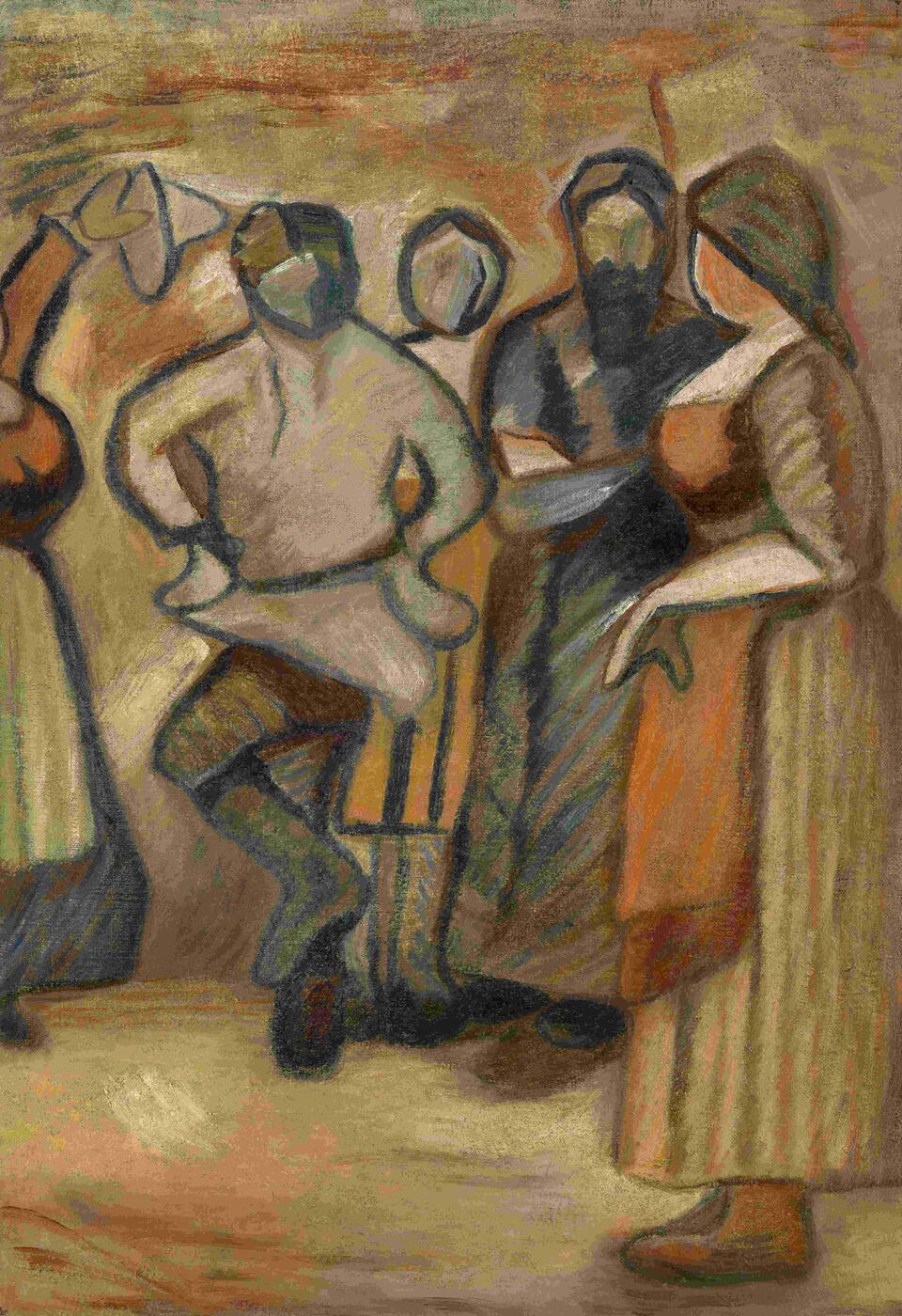MacDougall's Russian Art Auctions 1-2 Dec 2010
1 December 2010

* 345. MORGUNOV, ALEKSEI 1884-1935
The Dance indistinctly inscribed with a signature and titled in Cyrillic on the reverse
Oil on canvas, 75 by 51.5 cm.
250,000-300,000 GBP
Authenticity certificate from the expert Yu. Rybakova
Possibly Exhibited: Donkey's Tail, Moscow, 1912, No. 192, listed.
The Dance is typical of Alexei Morgunov's French period, dating from the time when the artist returned from his European tour. After his travels in 1909–1910, firstly to Germany and France and then to France and Italy, Morgunov returned to his homeland greatly impressed by what he had seen. He had found Puvis de Chavannes's murals in the Panthéon in Paris breathtaking "in their simplicity". In the Louvre he had stood for hours in front of Manet’s Nana, savoured the work of Courbet and the Barbizon school and roamed the streets of Paris, drinking in its atmosphere. Having paid homage to a variety of artistic movements, Morgunov was feeling his way in Paris, striving for a personal artistic approach. It is worth noting, however, that a hankering for independence, a need to assert himself as an artist, became apparent very early on, while he was still studying at the Stroganov Institute. The illegitimate son of Alexei Savrasov, Morgunov never changed his surname, even after being formally adopted by Savrasov. He did not want to "shine with a reflected light", as he put it.
In addition, the artist definitely saw in French art much that related to him, to his aspirations. His leaning towards Cézanne and the Post-Impressionists grew stronger, not only thanks to his newly-acquired familiarity with their work, but also to a sense of close communion with their creative lives.
In his travel notebooks, Morgunov drew only quick sketches, which he used once he was home, to recreate what he had seen, to re-live it and to transfer it to canvas. Soon after his return to Russia, paintings including Bois de Boulogne (1910), The Dance (1910), Under a Pink Shadow (1911) and At the Restaurant (1911) appeared, as well as many versions of Kuzminki, where the artist was living at the time.
All these works are distinguished by a vivid colour range, crisp outlines and a kind of "faceting" of forms. In the words of Olga Obolsina, a Morgunov specialist, "after his European tour, the artist began to talk in colour: it was as if something had been holding him back before, but now the power in the pigments suddenly surged on to his canvases. Perhaps Morgunov was remembering the words of his teacher, Sergei Ivanov, at the Stroganov Institute: '… paint everything — paint more boldly, as if talking with your brush'."
Morgunov most probably painted The Dance when he was part of the Jack of Diamonds group, during the first year or two after his return from Paris, or Donkey’s Tail, the group to which he moved in 1912, under the influence of its leading lights, Larionov and Goncharova.
Although the artist often gave his works the same titles, we can with some degree of probability identify the canvas now offered at auction as The Dance of 1910, well known from references in the literature, or The Dance which was shown at the Donkey’s Tail exhibition of 1912 (listed in the exhibition catalogue as no. 192). The free painting style, combining a crisp, decorative contouring with a bold kind of geometrisation, creating a recognisable compositional rhythm, allows us to date The Dance very precisely to the early 1910s.
It was at this time that Morgunov turned to genre scenes and produced such works as The Butcher’s Stall, In a Tea House and Café, which share all the same traits as the painting now offered at auction. The range of colours and upbeat tones of his palette combine well with a flatness and deliberate primitivisation, the artist shunning delicate detailing and often giving his characters the merest hint of a face. All this allows us to rank The Dance among this artist’s best works.
Notes on symbols:
* Indicates 5% Import Duty Charge applies.
Ω Indicates 20% Import Duty Charge applies.
§ Indicates Artist's Resale Right applies.
† Indicates Standard VAT scheme applies, and the rate of 20% VAT will be charged on both hammer price and premium.